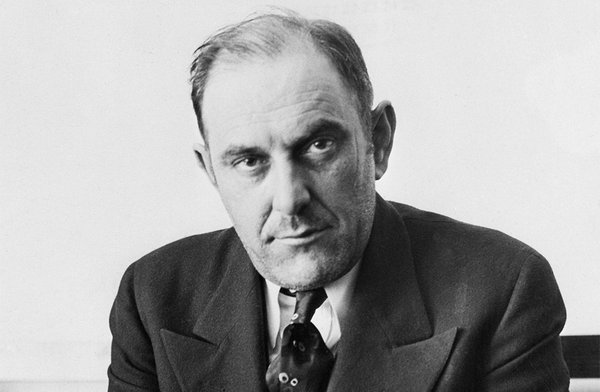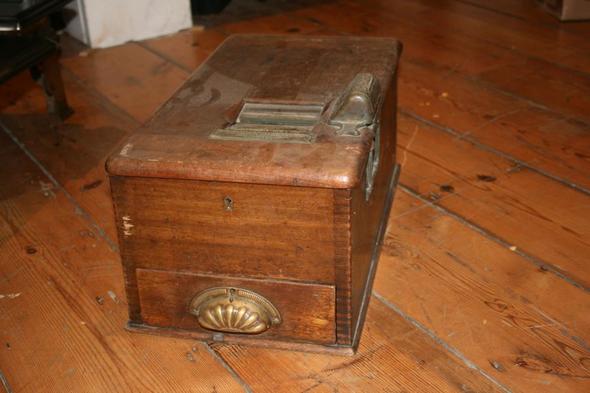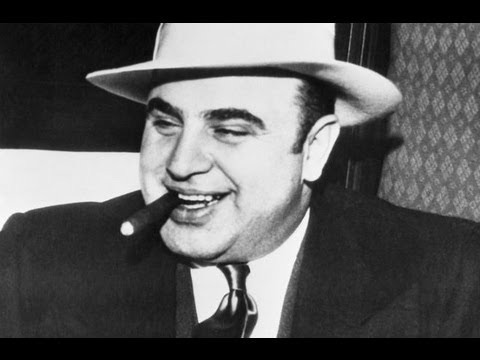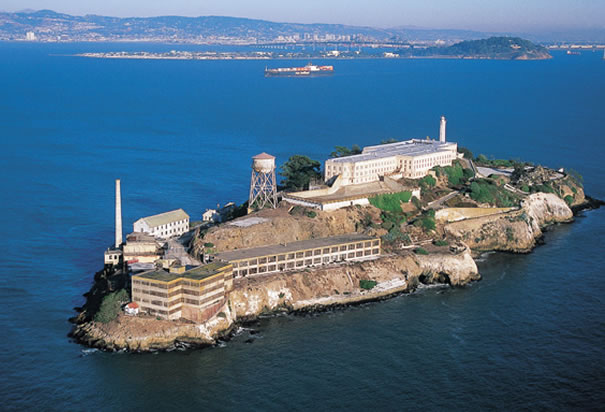He Swindled Al Capone and Sold the Eiffel Tower – Twice!
You’ve heard the old line about gullible suckers buying the Brooklyn Bridge, and smooth talkers selling swampland in Florida. Outlandish, right?
But in the 1920s and 30s, one con artist was so brazen, he actually sold Paris’ beloved Eiffel Tower … not once, but twice! He hustled money from the nastiest gangster of all time, Al Capone, and caused lawmen to pull out their hair in frustration.
That’s the remarkable legacy of “Count” Victor Lustig, the Con Man’s Con Man.
 Little is known about his early years. Born in the old Austro-Hungarian Empire, he was unusually bright, exceptionally charming and spoke several languages like a native. A better life beckoned beyond his little village, and Lustig set off to find it.
Little is known about his early years. Born in the old Austro-Hungarian Empire, he was unusually bright, exceptionally charming and spoke several languages like a native. A better life beckoned beyond his little village, and Lustig set off to find it.
He started his criminal career by frequently crossing the Atlantic on luxury liners right after World War I. He dressed like a GQ model, displayed impeccable manners and was smooth as silk. He made friends easily and soon was on good terms with the voyage’s richest passengers.
When they asked the source of his wealth, Lustig let them in on a secret: he had a “money box” that printed $100 bills. Intrigued, they always begged him to see it. Amid great secrecy, he eventually showed them a wooden box supposedly containing a complex contraption with rollers and printing plates that, fueled by radium, printed perfect C Notes. The only problem, Lustig lamented, was the time … it took six hours to print a single bill. He would twist a few knobs and buttons, turn off the lights and  lock the room. When he returned with his guest six hours later, a crisp $100 bill was coming out of the machine. They came back again six hours after that, just as another fresh hundred was emerging.
lock the room. When he returned with his guest six hours later, a crisp $100 bill was coming out of the machine. They came back again six hours after that, just as another fresh hundred was emerging.
By this point the victims were begging him to sell them the machine, which he always did with great reluctance. Each money box sold for between $10,000 and $30,000. One reportedly fetched $47,000. Of course, by the time Lustig was safely off the ship, the buyer discovered the box only produced blank paper after it had dispensed the two authentic $100 bills Lustig had loaded into it.
He needed a lot of money, because in 1919 Lustig married an innocent Kansas girl and started a family. He also began a long-term affair with a millionaire madame in New York named Billie Mae Scheible. (More on her in a minute.)
In 1925, Lustig decided to go big. He moved to Paris and set in motion a scheme to sell the Eiffel Tower. At the time, the idea wasn’t as absurd as it sounds today.
 Built for the 1889 Paris Exposition, the Tower was only intended to stand for twenty years and then be dismantled. When Lustig showed up in the City of Light, it was 36 years old and a rusting eyesore. Incredible as it sounds now, a sizable number of Parisians wanted it gone.
Built for the 1889 Paris Exposition, the Tower was only intended to stand for twenty years and then be dismantled. When Lustig showed up in the City of Light, it was 36 years old and a rusting eyesore. Incredible as it sounds now, a sizable number of Parisians wanted it gone.
Lustig had official-looking stationary printed identifying him as Deputy Director of the Ministre de Postes et Telegraphes. He sent letters to six leading scrap metal dealers, inviting them to a hush-hush meeting to discuss removing the landmark. Absolute secrecy was critical, he insisted, to avoid a public uproar.
 When “Count” Lustig pulled a scam (the “Count” title he used was as genuine as his money boxes), it was a VIP operation all the way. He got a room in the elegant Hotel de Crillon and met the dealers in it. Then they all went by limo on an inspection tour of the Tower. Back at the hotel, he invited them to submit sealed bids the next day.
When “Count” Lustig pulled a scam (the “Count” title he used was as genuine as his money boxes), it was a VIP operation all the way. He got a room in the elegant Hotel de Crillon and met the dealers in it. Then they all went by limo on an inspection tour of the Tower. Back at the hotel, he invited them to submit sealed bids the next day.
One dealer was especially eager to win the contract. Andre Poisson asked for a private meeting with Lustig. He explained he was new to Paris and didn’t have the insider connections the other dealers did. Lustig said he understood; as a government bureaucrat he didn’t make much money and was having trouble making ends meet. But he insisted selling the Eiffel Tower was a big decision and he wanted to get it right. (Wink wink.)
Poisson took the hint. He paid $20,000 as earnest money for purchasing the Tower, and another $50,000 to guarantee his bid would be the winner.
Within one hour, Lustig was on a train speeding to Vienna with $70,000 in cash. (Incidentally, when Poisson realized he’d been conned, he was too humiliated to call the cops.)
Now here’s the most amazing part of all: a month later, Lustig was back in Paris, pulling the very same scam. Can you say ‘audacious,’ boys and girls?
But things didn’t didn’t work so well this time. When Lustig sent letters to six more scrap dealers, one smelled a rat and alerted the police. Lustig got wind of it and was on an ocean liner for America when officers showed up at his hotel.
Armed with 47 aliases and dozens of passports and other fake ID, Lustig charmed his way from one con job to another.
 He wound up in Chicago, where he had the chutzpa to hustle Scarface himself. He told Al Capone he had a great stock deal in the works (this was the Roaring Twenties, remember, when Wall Street was red hot), but he needed $50,000 to finance it. He promised to double the gangster’s money in two months. Exactly 60 days later he sadly returned all $50,000, telling Big Al the deal had fallen through. Impressed with his “honesty,” Capone gave him $5,000 to invest on his behalf, which Lustig pocketed as he hurried out of town (which had been his plan all along),
He wound up in Chicago, where he had the chutzpa to hustle Scarface himself. He told Al Capone he had a great stock deal in the works (this was the Roaring Twenties, remember, when Wall Street was red hot), but he needed $50,000 to finance it. He promised to double the gangster’s money in two months. Exactly 60 days later he sadly returned all $50,000, telling Big Al the deal had fallen through. Impressed with his “honesty,” Capone gave him $5,000 to invest on his behalf, which Lustig pocketed as he hurried out of town (which had been his plan all along),
 He was arrested more than 40 times, and either beat the rap in court or slipped out of his cell – including the same Lake County, Indiana jail that John Dillinger broke out of. In 1930, he partnered with a chemist and fellow con man named Tom Shaw. The two were soon producing $100,000 a month in excellent counterfeit bills. The Secret Service really wanted to catch them, but couldn’t find who was floating all that phony money.
He was arrested more than 40 times, and either beat the rap in court or slipped out of his cell – including the same Lake County, Indiana jail that John Dillinger broke out of. In 1930, he partnered with a chemist and fellow con man named Tom Shaw. The two were soon producing $100,000 a month in excellent counterfeit bills. The Secret Service really wanted to catch them, but couldn’t find who was floating all that phony money.
Their break came in 1935, courtesy of the Green-Eyed Monster.
Lustig was still carrying on his affair with high priced madame Billie Mae. Unfortunately for Lustig, he put the moves on Shaw’s mistress, who promptly told Billie Mae. Proving that Hell, indeed, hath not fury like a woman scorned, the enraged madame went to the police and spilled the beans.
Now that the Feds knew who they were looking for, it was just a matter of time. When they finally caught him on a New York sidewalk a few months later, Lustig was carrying a large suitcase. Hoping it held evidence of his counterfeiting activity, officers were disappointed when they found nothing but expensive clothing. But they weren’t disappointed long. His wallet held a hidden key; when they used it to open a subway station locker, they discovered $51,000 in bogus bills and the plates that had printed them.
 Alcatraz was the next stop for this remarkable criminal, where he was sentenced to serve twenty years. In early 1949 he contracted pneumonia, and died a few weeks later at the federal prison hospital in Springfield, Missouri.
Alcatraz was the next stop for this remarkable criminal, where he was sentenced to serve twenty years. In early 1949 he contracted pneumonia, and died a few weeks later at the federal prison hospital in Springfield, Missouri.
To paraphrase The Grateful Dead, what a long strange trip it had been.
In one final bit of irony, Lustig’s death certificate listed his occupation as “apprentice salesman.” Some apprentice! Victor Lustig knew more ways for getting people to part with their money than Steve Jobs, Zig Ziglar and other great salesmen ever learned.
 It’s just a shame he used all that charm and skill for his own selfish gain.
It’s just a shame he used all that charm and skill for his own selfish gain.
Did you find this enjoyable? Please continue to join me each week, and I invite you to read Tell it Like Tupper and share your review!
Curious about Tell It Like Tupper? Here’s a chance to see for yourself. Take a sneak peek at a couple chapters in this free downloadable excerpt.

